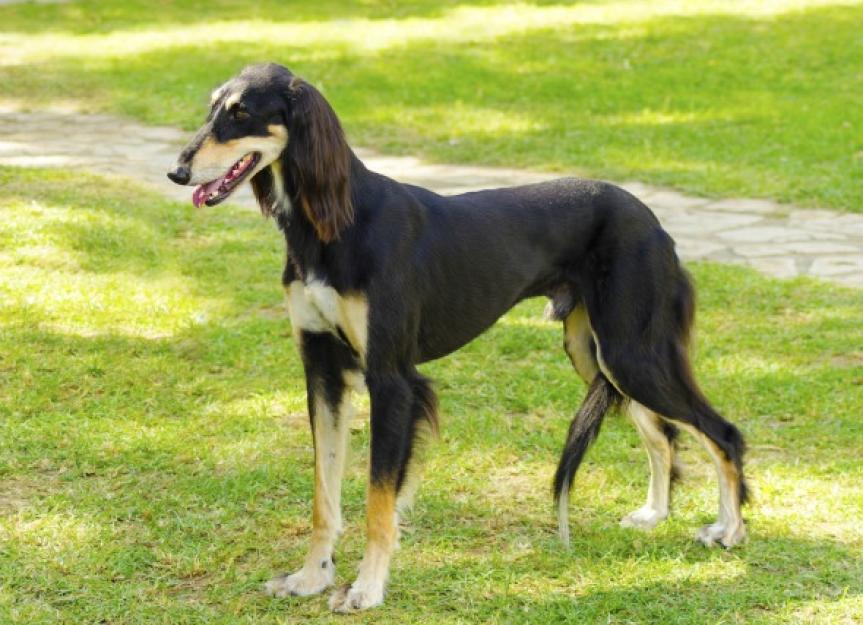Scaly Skin in Dogs
Exfoliative Dermatoses in Dogs
Exfoliative dermatoses refers to a group of skin disorders that can be traced to one or more underlying disorders, which share the common symptom of scaling skin, but may vary in severity and treatment methods. Therefore, exfoliative dermatoses is not the primary diagnosis, but the main descriptor. It is typically due to excessive or abnormal shedding, excessive accumulation of skin cells, or a loss of the cells' ability to adhere to each other.
This condition can affect dogs of any breed or age, but there are some breeds that are reported to be more prone to it. Cocker spaniels, West Highland white terriers, English springer spaniels, basset hounds, Irish setters, Doberman pinschers, Labrador retrievers, Alaskan malamutes, Siberian huskies, chow chows, poodles, Yorkshire terriers, whippets, Great Danes, salukis, Italian greyhounds, standard poodles, Akitas, Samoyeds, and golden retrievers.
If your dog is pregnant, you will need to make your veterinarian aware immediately, as some medications for the skin can have an impact on the developing fetus.
Symptoms and Types
- Scales may be seen as fine particles, such as dandruff, or in sheets (coarse scale)
- Greasy or dry accumulation of surface skin cells, as seen in dandruff
- Excessive scaling due to shedding of skin cells
- Itchiness
- Accumulations may be found throughout the hair coat or in certain localized areas
- Filling of hair follicles with oil and skin cells
- Accumulation of debris around the hair shaft
- Excess scales and crust on the nasal planum and footpad margins – may lead to cracking of skin and bacterial invasion
- Hair loss (alopecia)
- Skin infections characterized by presence of pus
- Rancid fat odor
- Nails may also be affected
Causes
- In some cases the exact cause remains unknown (idiopathic seborrhea)
- Vitamin A deficiency in some cases (cocker spaniels)
- Zinc deficiency in some cases (Alaskan malamute, Siberian husky, large breed puppies)
- Abnormal skin and hair follicle development
- Thickening of skin due to unknown cause
- Inflammation of sebaceous glands (glands that produce oils in the hair coat)
- Congenital defects in normal replacement of shedding of skin cells
- Allergy (pollen allergy,flea bite allergy、食物过敏等)
- 寄生虫感染(cheyletiellosis,demodicosis,mange)
- Skin infections
- Hormonal disorders
- Age related (seen in older dogs due to natural alterations associated with aging)
- Nutritional disorders and reactions (malnutrition, feeding generic food)
- Diseases of immune system, where the body’s immune system attacks its own skin (pemphigus)
- Diabetes melitus
- Tumors of the skin
Diagnosis
You will need to give a detailed history of your dog’s health, and the onset and nature of the symptoms. In order to find the underlying cause for the skin disorder, your veterinarian will perform several tests. Because there are so many possible causes for this condition, your veterinarian will most likely use differential diagnosis. This process is guided by deeper inspection of the apparent outward symptoms, ruling out each of the more common causes until the correct disorder is settled upon and can be treated appropriately.
Standard tests will include a complete blood count, biochemistry profile, and urinalysis, which are often within normal range unless there is a concurrent disease that is associated with the blood, such ashyperthyroidism, bacterial infection, fungal infection, or cancer.
To evaluate the skin, the following procedures may be required:
- Skin scrapings, which will be sent to lab for fungal, bacterial cultures
- Skin biopsy
- Skin allergy – intradermal skin testing
- Testing for ectoparasites (skin parasites)
- Food elimination trial may be used if a food ingredient is suspected
Explore More:
Treatment
Proper diagnosis of this disorder and other concurrent diseases, if present, is important for successful treatment. Frequent and appropriate topical therapy (by which medicines are applied to the surface of skin) is important.
洗澡会消除表面的鳞片the skin and hair, but this can also dry the skin, making the problem worse. Your veterinarian will prescribe topical medications to be used that will treat the problem, and a moisturizing ointment to replenish the skin's moisture content. There are some excellent topical formulas available to treat this condition, but it is up to you for treatment to be successful. Salicylic acid or benzoyl peroxide shampoos may be prescribed, as they are both excellent for cell turnover. Which type of shampoo will depend on your dog's exact type of scaling and reaction: whether you need to minimize microbes or bacteria in the skin, and whether the bacterial infections or severe or moderate. Following the directions given by your veterinarian and the drug manufacturer is essential for bringing the skin into balance again.
If there is a concurrent disease/condition that is responsible for this skin disorder, treatment will be prescribed appropriately. Antibiotics may be used in cases with secondary bacterial skin infections, antifungal drugs will be prescribed for cases with fungal infection, antiparasitic drugs can be used to remove the parasites. For deficiency of vitamin A or zinc, your dog will be given supplements to bring this into balance, and forhypothyroidism, thyroxine can be prescribed.
Living and Management
The most important factor in managing a dog with exfoliative dermatosis is the frequent and appropriate topical therapy. Frequent bathing is important in the overall treatment of this disease. You will need to follow the treatment guidelines strictly for successful treatment and to prevent a relapse of symptoms.
This is often a lifelong problem that will need to managed. Follow-ups with a veterinarian are standard for evaluating progress and fine tuning the treatment plan.
Some skin diseases have zoonotic potential, meaning that they can be passed on to other animals, including humans. Taking precautions, such as wearing gloves while treating your dog, minimizing direct skin contact during initial treatment, and cleaning and maintaining a sterile home environment during treatment will minimize the chances of being infected.
Help us make PetMD better
Was this article helpful?
